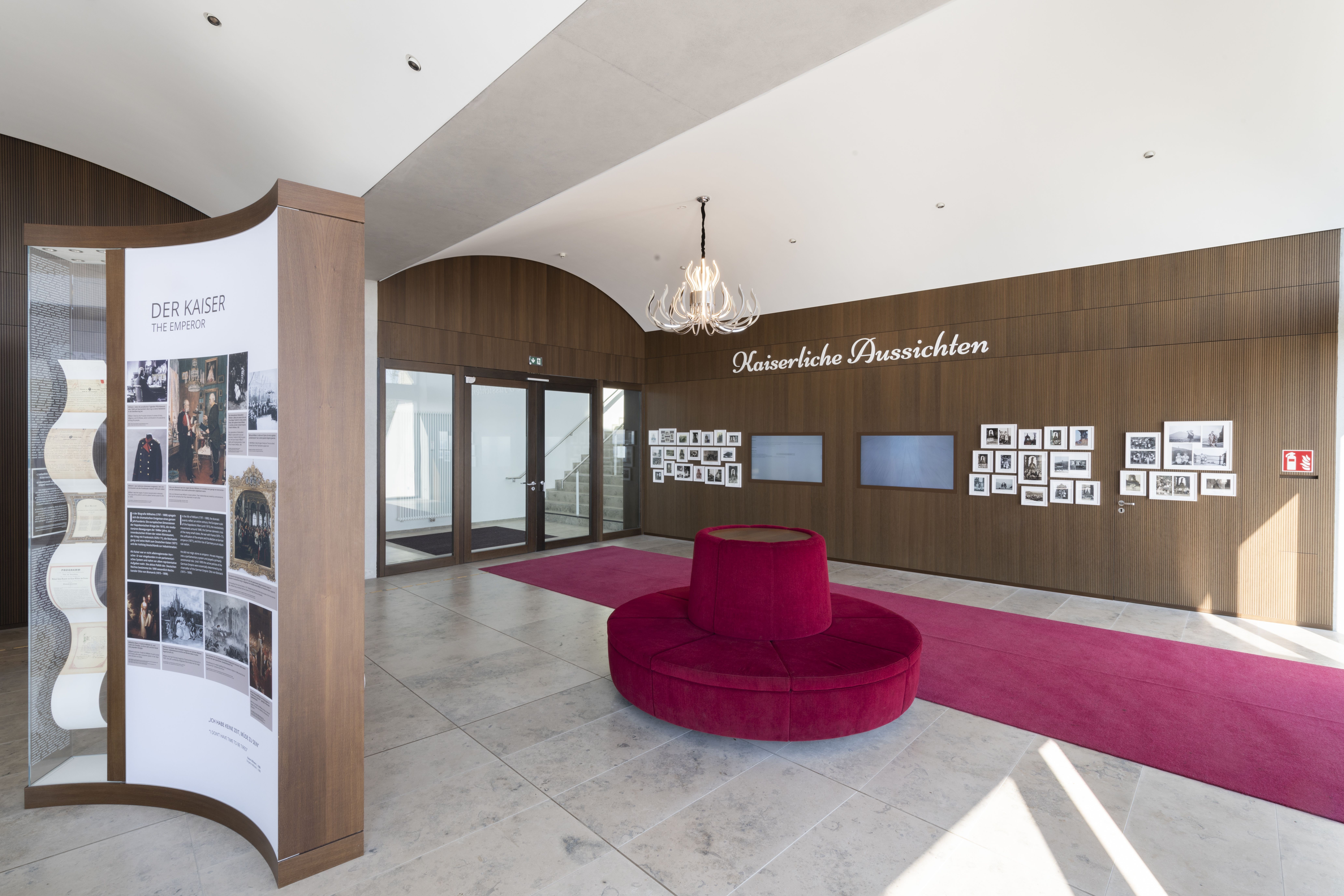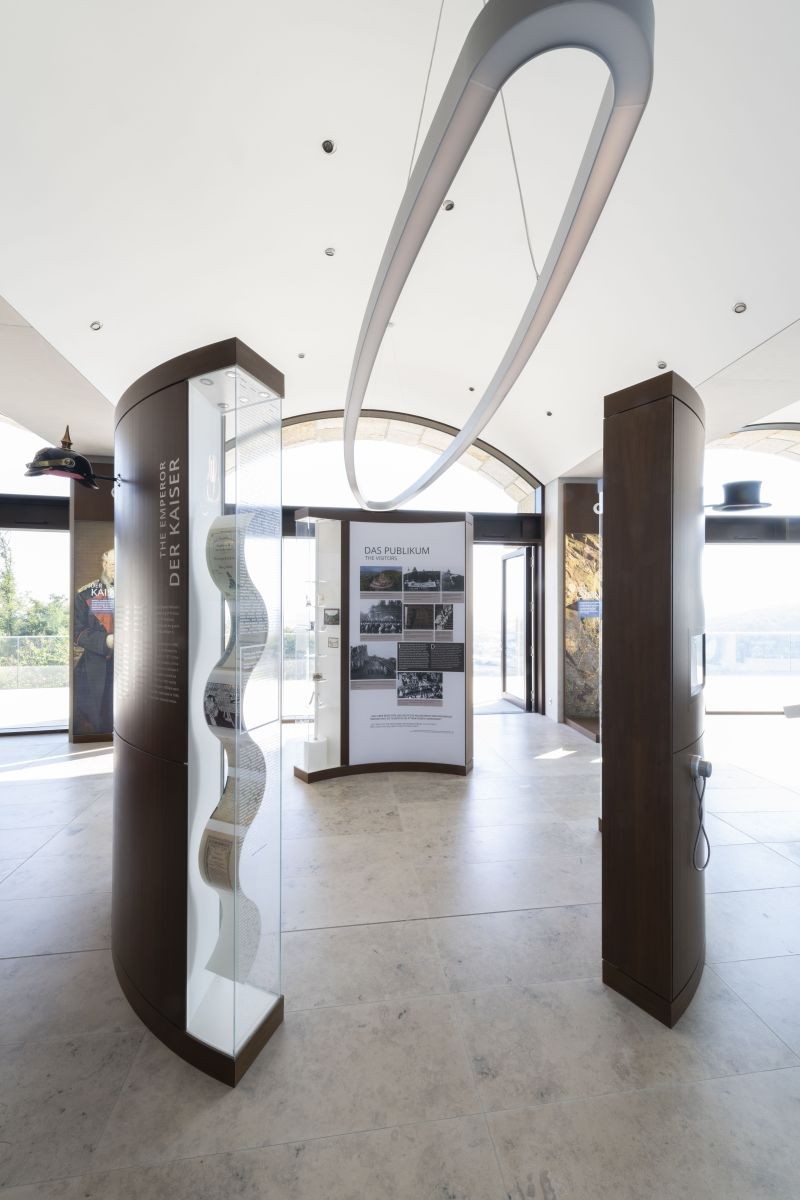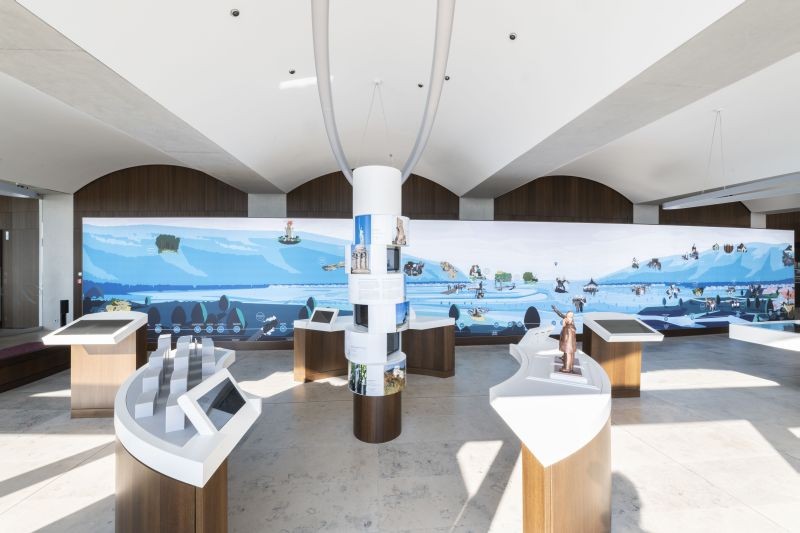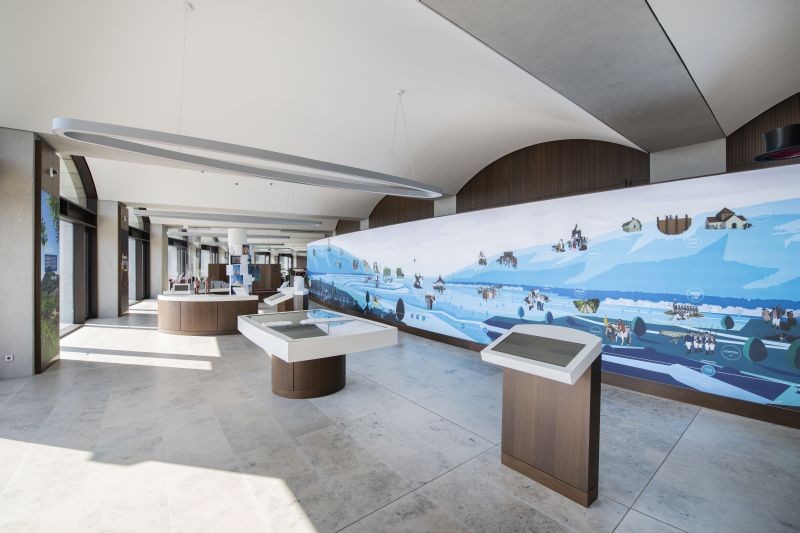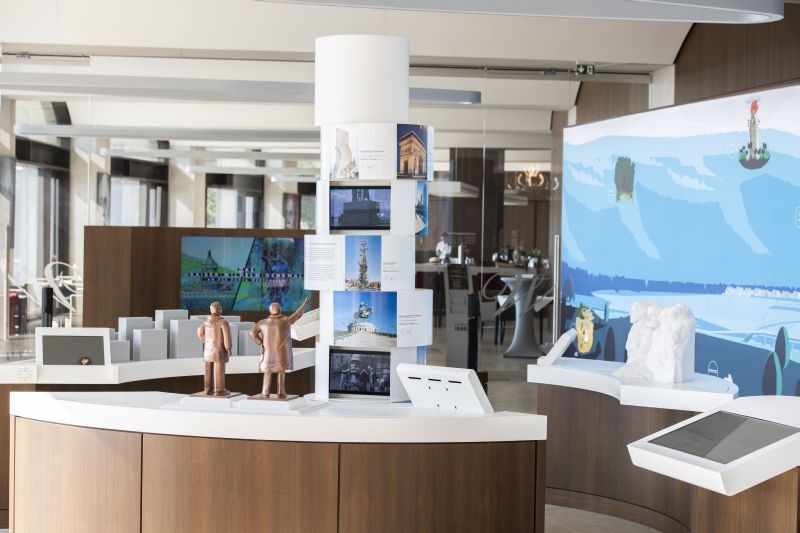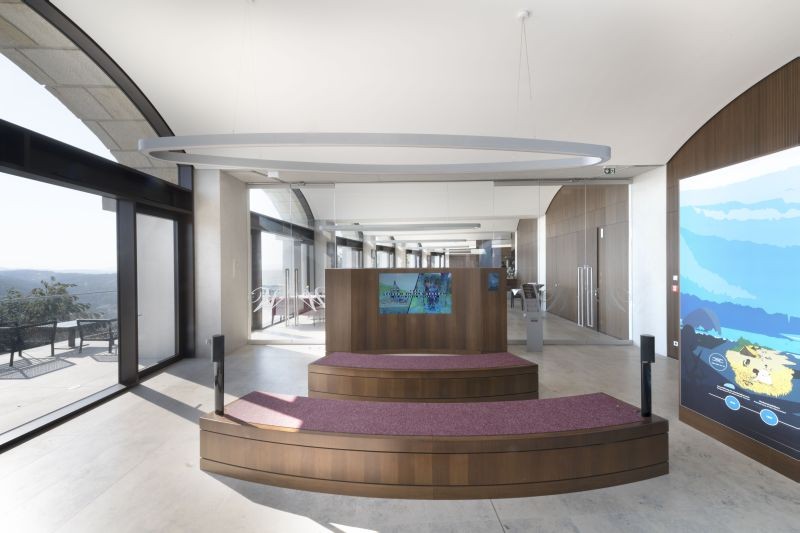2. The “Rondell” (circular) media station consists of circularly arranged displays and dedicates itself to the monument from the perspectives of Kaisers (William I and II), the monument itself and the public. Within the circle of displays, these three topics are further explored by means of texts and a collage.
The erecting of the monument at Porta in 1896 served to honour both Kaisers, it not only celebrated the unification of the German Reich in 1871, as personified by Wilhelm I, but also Wilhelm II, to whom the initiators of the monument also paid homage in the hope that it would be positively received by him.
After the death of Wilhelm I, a large number of monuments were created in the provinces of the German Reich, mainly at the behest of the middle classes. In glorifying Wilhelm I, as founder of the Reich, the initiators also combined a desire for recognition and goodwill from Kaiser Wilhelm II. The Kaiser Wilhelm Monument proved, even during its construction, to already be a major public attraction, resulting in monument souvenirs and a variety of “Kaiser kitsch”. Following the end of the First World War in 1918 however, enthusiasm decreased and the abdication of the monarchy ensued. Kaiser Wilhelm II fled into Dutch exile. But whilst the political significance of the monument changed, its impact on tourism remained.
These three perspectives on the monument are also embodied by actors in a media station located on the external wall of the circular display. Whilst Kaiser Wilhelm II speaks from memory at the end of the 1890s, the mayor of Minden Theodor Bleek (1833-1905) talks about the event from a distance of about one or two years, and Henny, a maid, talks in 1921, following her experience of the First World War.
Finally, to the side with the windows, four large-scale backlit images complement the circular display, summarising information on the subjects of the “Kaiser”, “Porta Stone”, “Nature” and “The Monument”.
